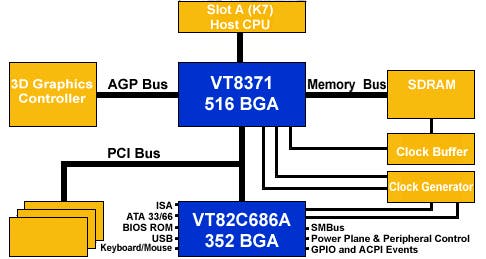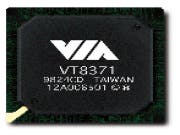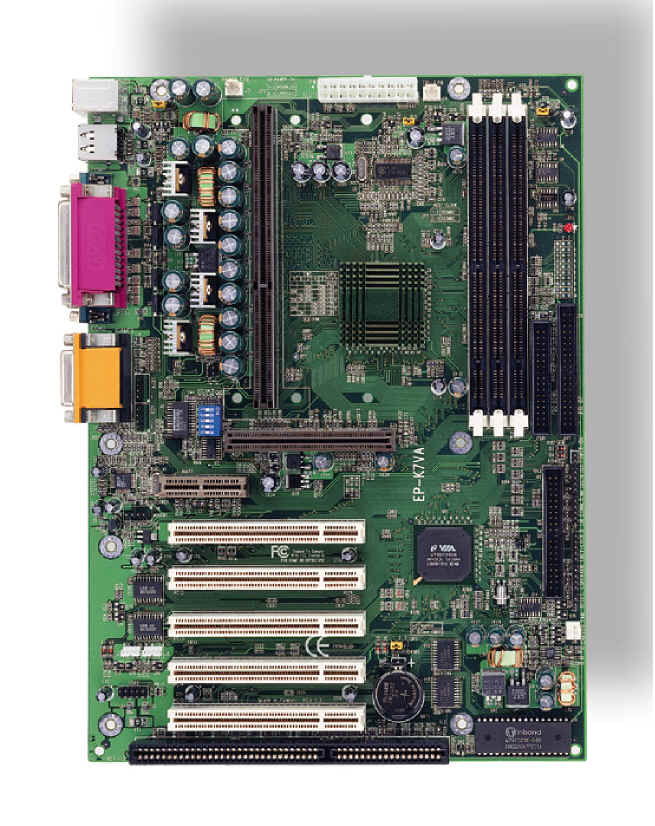Epox 7KXA Athlon motherboard
Athlon motherboard reviewed
- EpoxPrice - about £120

IronGate
Ever since its release the AMD Athlon has suffered from poor motherboard support. While the original AMD IronGate chipset wasn't particularly bad, the design specifications for boards based around it were rather demanding, especially for a standard desktop PC.
One of the hardest requirements was that the motherboards needed to be constructed from a six layer printed circuit board. This led to interesting problems, not to mention the added cost caused by the process. Thanks to this extra cost (which pushed board prices way beyond that of the average BX based board) and some of the initial teething problems with the IronGate chipset (namely poor AGP support and the Super Bypass feature), Athlon uptake was perhaps a little slower than it might have been.
Because of these problems, many held off awaiting the arrival of the KX133 chipset from VIA. Unfortunately, due to delays and a fierce legal battle between VIA and Intel, the KX133 arrived a little later than expected. It finally appeared a few months ago, and one of the first boards to hit the shelves was Epox's 7KXA motherboard...

Enter KX133
Thanks to the KX133 chipset the specifications that the board needs to meet have been slightly relaxed, so that a more standard 4 layer PCB can be used. This allows for not only more stable and less power hungry boards, but also cheaper boards.
The KX133 feature set is suitably large for a new chipset, and it certainly makes Intel's ageing BX design look like a poor competitor, with the now standard Ultra ATA 66 drive interface, AGP 4x, support for asynchronous memory speeds, and four USB root hub ports.
The most interesting of these is the memory speed support. As the Athlon runs on a 100MHz DDR CPU bus the rest of the system operates at the standard 100MHz. The memory is also run at this speed, but there is an option to increase the memory bus speed (and only the memory bus speed in this case) to 133MHz. This allows for greater memory bandwidth, and is most important when it comes to AGP 4x.
To highlight this, at 100MHz and with a standard bus width of 64bits (8 bytes) the maximum bandwidth is 800Mb/sec (100*8). At 133MHz this becomes 1.06Gb/sec (133*8). This happens to match exactly the maximum transfer rate of AGP 4x.
As an additional note, the board also supports VCSDRAM (Virtual Channel SDRAM), although currently this type of memory is vary rare, and more expensive than standard SDRAM. The general consensus is that if you're going to spend more money on memory, it would be better spent on 133MHz capable memory than VCSDRAM.

The Board
The board itself has the standard compliment of 3 DIMM slots, 5 PCI Slots, 1 ISA slot, 1 AGP slot, and the new (but seemingly useless for now) AMR slot.
The standard set of connectors (serial, parallel etc.) can be found at the back of the board, along with three audio connectors and a joystick / midi port, which is connected to the onboard AC97 compliant codec. Which is useful, as the board is capable of producing some sound out of the box.
Epox have thoughtfully included a UDMA 66 capable cable, which will certainly save the average user a few pounds if they want to connect up a new UDMA66 capable drive and achieve the best performance possible. Also included in the box is a copy of Norton AntiVirus 5 and Norton's brilliant Ghost utility. Both of these are worthy inclusions, as in this day and age no one should be without protection from viruses, while Ghost allows for easy cloning of your old drive on to a new one, ready for use with your shiny new Athlon system.
The board also supports some overclocking features, which will interest some users as it may allow them to get more out of their chip without having to instantly resort to one of the many Athlon overclocking devices now available. These features could also augment such devices.
Among the features supported by the board are voltage selection, from 1.5v to 1.8v, and selectable front side bus speeds which allow for acceleration of the Athlon chip.
Conclusion
The board is well specced, well priced, and should perform well with the Athlon. It should also alleviate any problems that previous upgraders have experienced with power supply issues, in that the board is less power hungry than earlier boards based on the IronGate.
Despite this the Epox board isn't perfect - it might have been nice to see a fourth DIMM slot and a sixth PCI slot, and perhaps a better audio codec, as the one on the board is unknown.
Even with these slight niggles though the Epox 7KXA is a well featured board that is certainly not going to hinder the Athlon as a very viable desktop alternative to an Intel processor.
The only problem that I forsee with the KX133 chipset in general is that AMD are planning to release another chipset that supports DDR SDRAM, which will help alleviate bandwidth problems even more. Even VIA are working on a chipset that supports this new memory type. It is therefore only a matter of time before KX133 based boards like this are superseded, but this is the way of things in the computer world.
